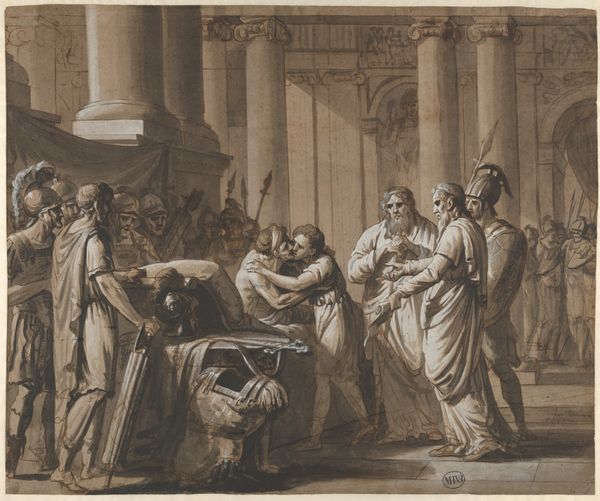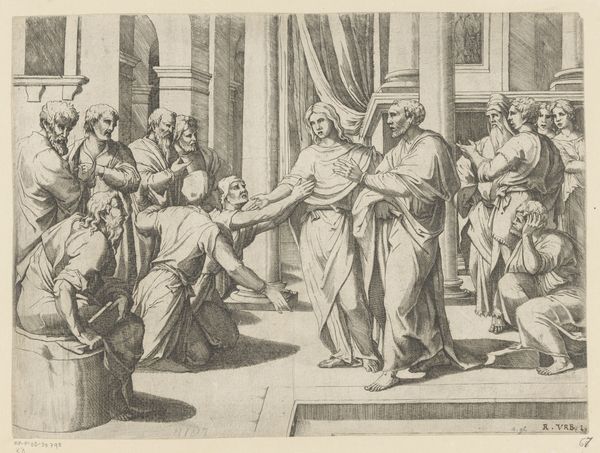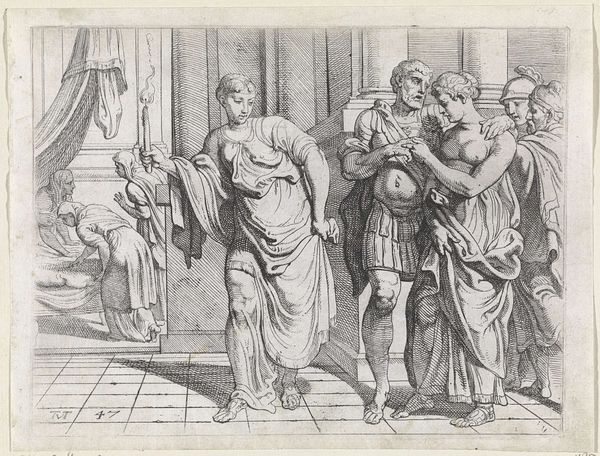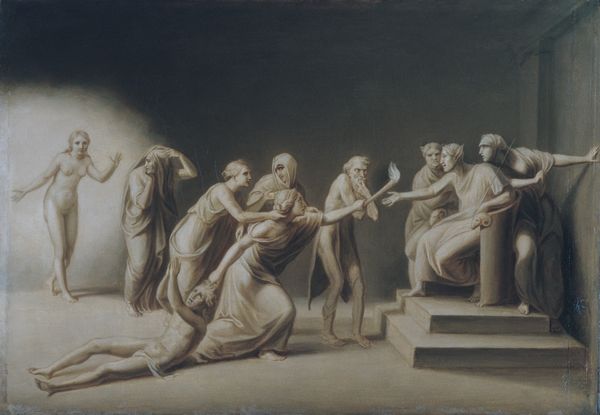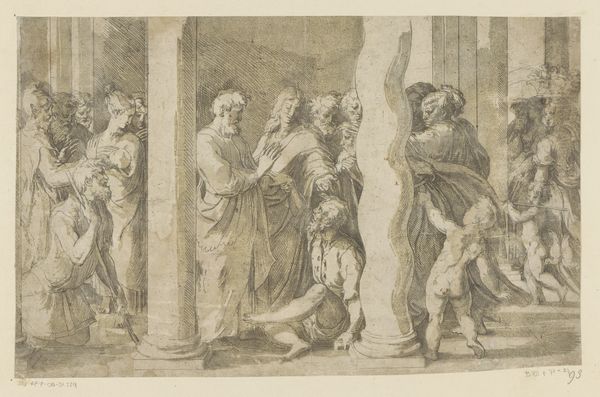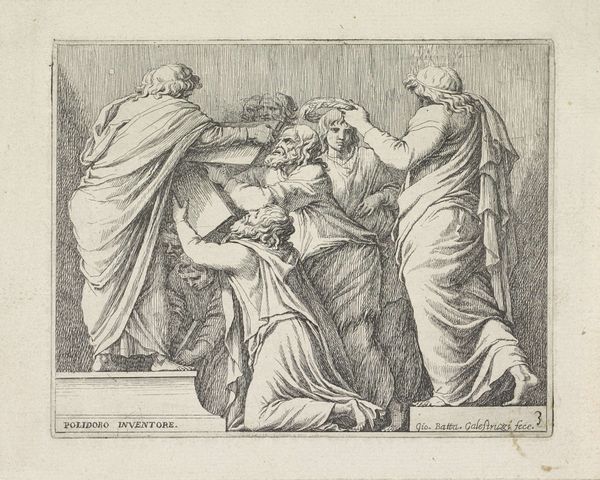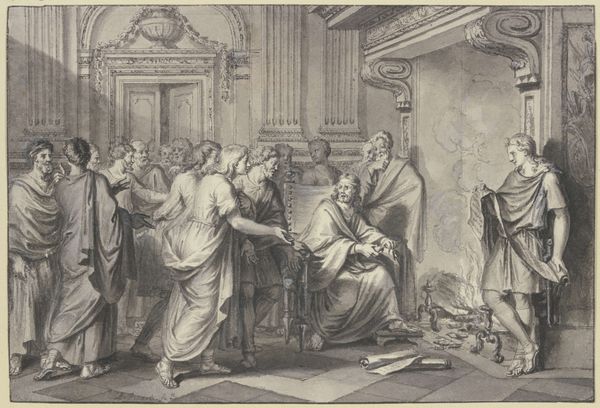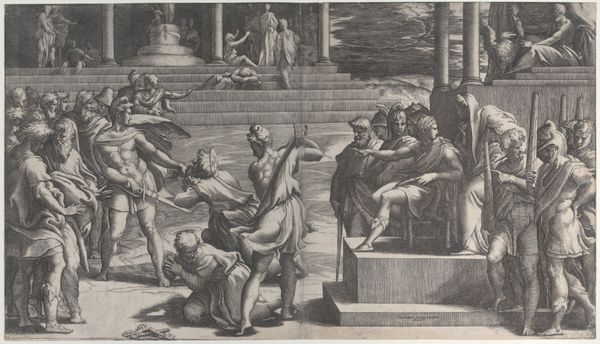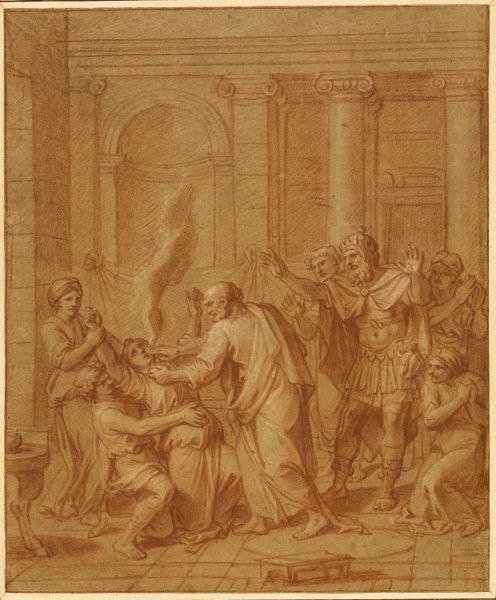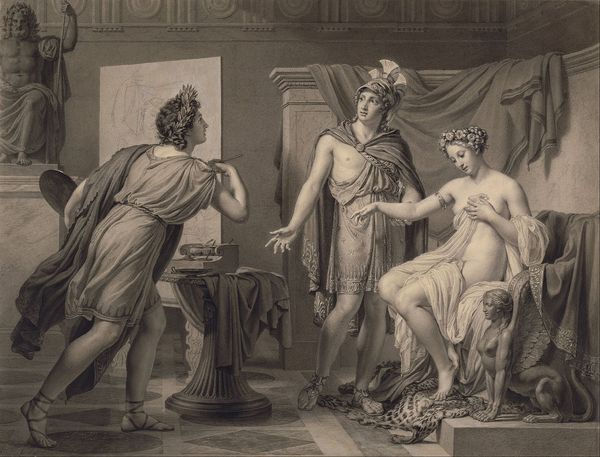
drawing, mixed-media, print, paper, ink, pen
#
drawing
#
neoclacissism
#
mixed-media
#
allegory
# print
#
charcoal drawing
#
paper
#
ink
#
pen
#
history-painting
#
mixed media
Dimensions: 381 × 544 mm (primary support); 405 × 557 (secondary support)
Copyright: Public Domain
Curator: Looking at this work, "Cléombrote and Léonidas" by François-Xavier Fabre from around 1795, now at the Art Institute of Chicago. What's the first thing that jumps out at you? Editor: The starkness, definitely. It's a monochrome world with subtle tonal shifts—it almost feels like looking at a memory trying to solidify itself on paper, a haunting tableau. Curator: Exactly, and it encapsulates a really potent historical moment. Fabre here tackles the themes of duty, sacrifice, and political turmoil by portraying the story of King Cleombrotus of Sparta, who, faced with internal strife and potential civil war, ultimately chooses to abdicate his throne to his brother Leonidas. Editor: So much drama packed into one image! You've got the kneeling figure, presumably Cleombrotus' wife, desperately clinging to Leonidas—and this solemn almost ghostly assembly of figures witnessing this transfer of power. Curator: Note how Fabre employs Neoclassical ideals. The crisp lines, balanced composition, and use of historical subject matter all echo that era's interest in virtue and order but given this really intense familial moment. There’s a push and pull between public duty and private emotion. The setting is Spartan: the statue of Poseidon looms, which places their internal conflict within a historical and divine framework. It elevates their choices to an almost archetypal level. Editor: That divine presence, that's what gives me pause. It’s very imposing, but something about it doesn’t sit quite right. It adds an odd layer of almost artificial grandeur that clashes a bit with the very personal anguish happening at the foreground. Like, is this divine mandate actually behind it, or a social pretext? It's powerful in its execution and message but somewhat stiff. Curator: A fair assessment. It's interesting how Fabre uses a mixed media of pen, ink, charcoal, and wash on paper to emphasize the dramatic tension within his narrative, though. Those stark whites versus areas of deep shadow add emotional resonance. Also note the sword cast off by Cleombrotus lying disregarded near the edge of the gathering; its abandonment speaks loudly. Editor: You are so right. It tells an intricate story beyond just a change in royal position; you have abandonment of arms and all those heavy emotional implications. Curator: Ultimately, Fabre encapsulates this transition using all means possible in the chosen mediums in a fashion both stark and theatrical. The image offers much when it comes to interpreting moments of inflection that decide the future of both societies and individuals within them. Editor: True—I guess the enduring allure is that Fabre lets that quiet domestic turmoil take center stage, rather than only the march of kings and kingdoms, adding a nuanced dimension to an era that usually favors heroism over human fragility.
Comments
No comments
Be the first to comment and join the conversation on the ultimate creative platform.
